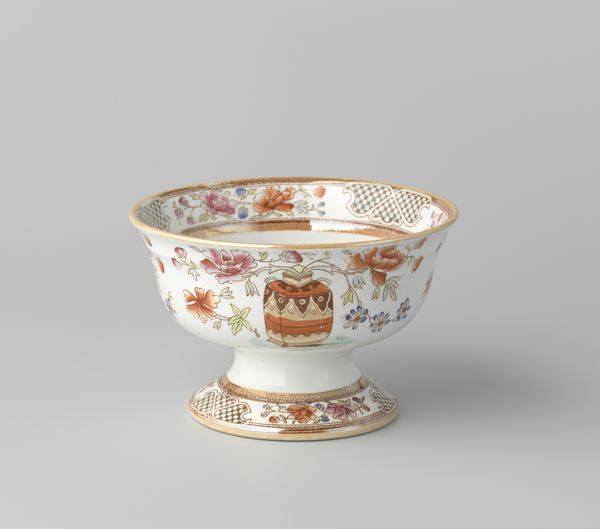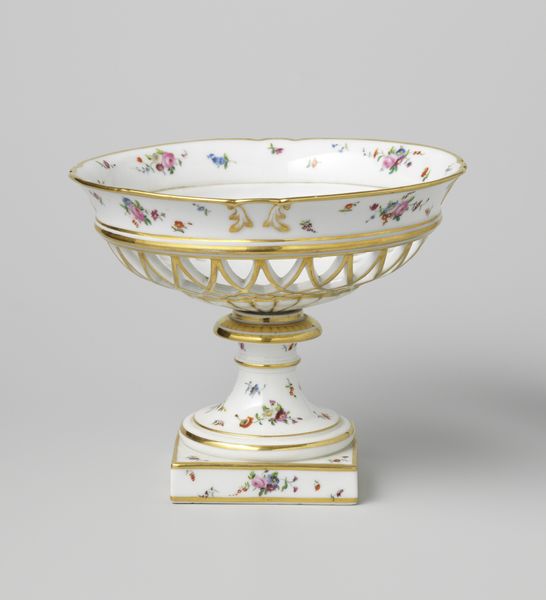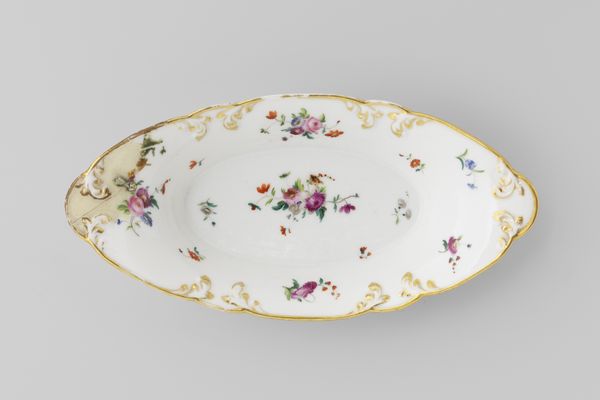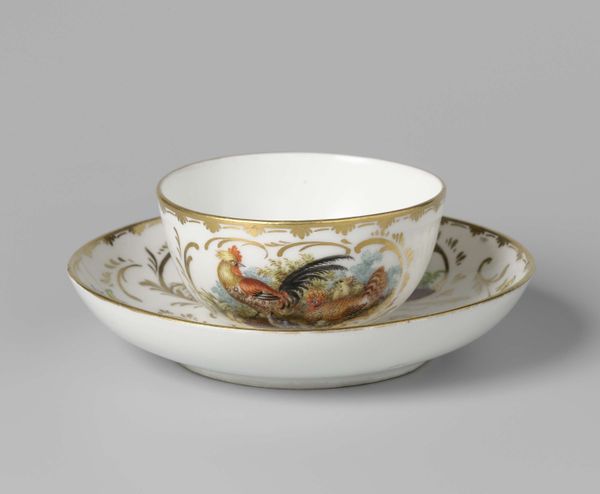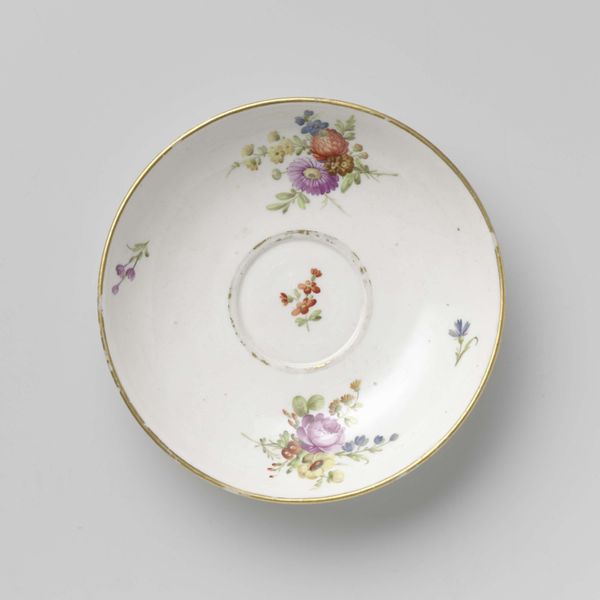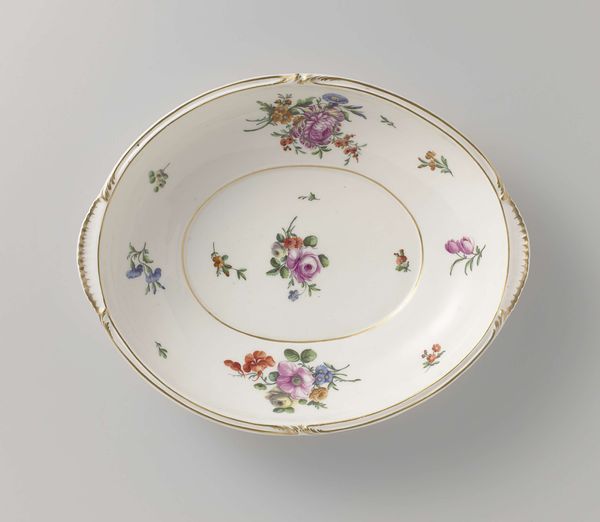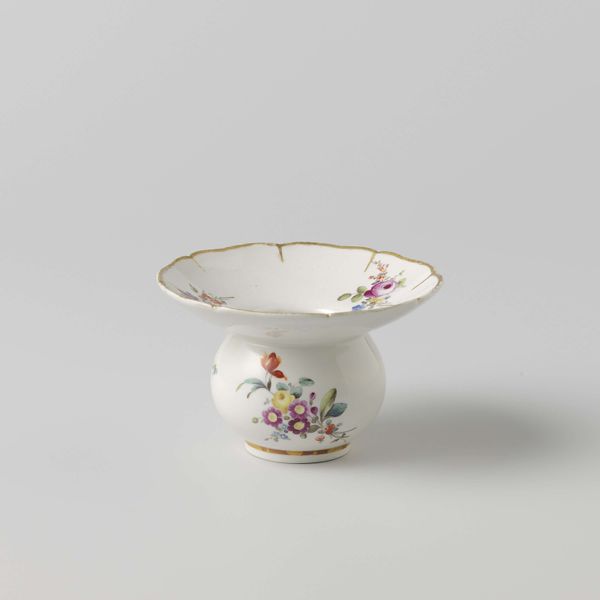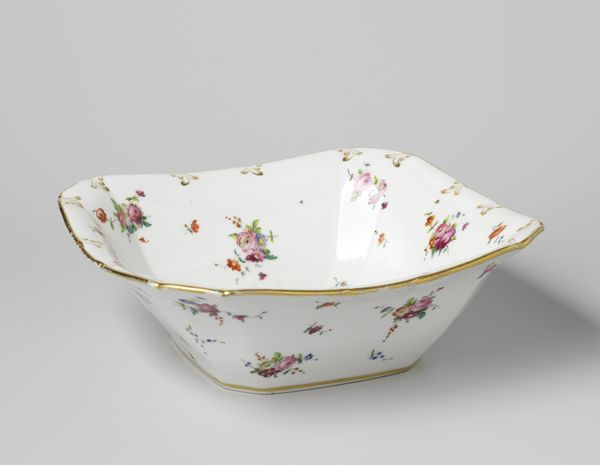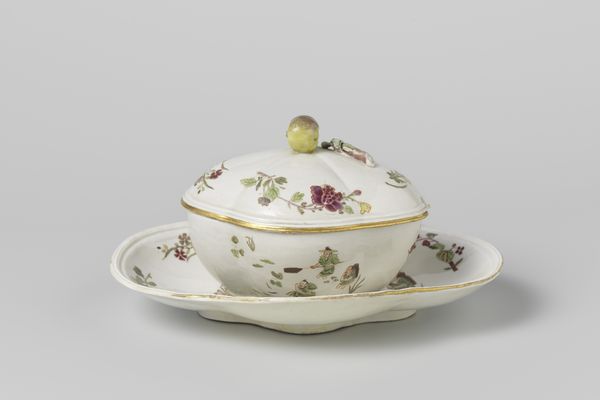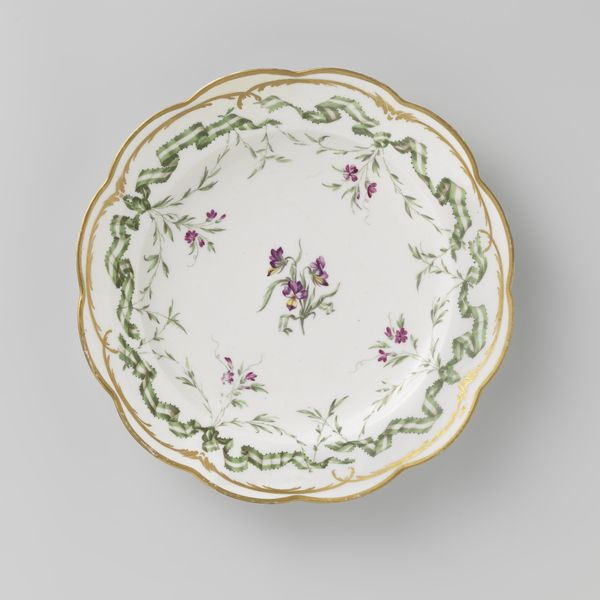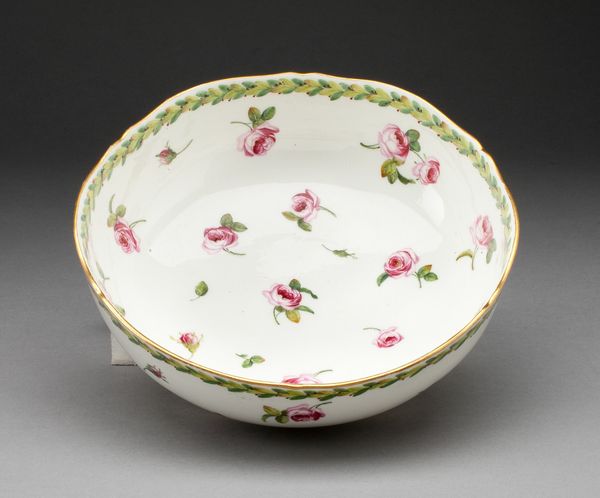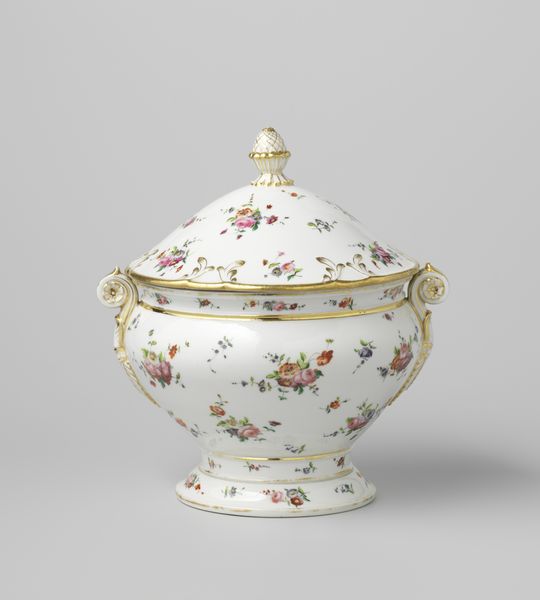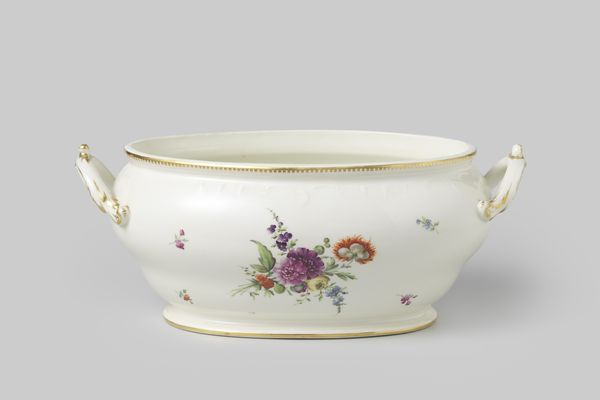
Tazza (dish on foot) with bouquets and flower sprays c. 1839
0:00
0:00
fabriekdominiquedenuelle
Rijksmuseum
ceramic
#
ceramic
#
stoneware
#
decorative-art
Dimensions: height 11.5 cm, diameter 22 cm, diameter 11.7 cm
Copyright: Rijks Museum: Open Domain
Editor: Here we have a Tazza, a dish on foot, made around 1839 by Fabriek Dominique Denuelle. It's ceramic, adorned with little bouquets and flower sprays. It seems like a rather fancy vessel. How should we be thinking about this decorative art? Curator: Think of it as an object born of specific processes. Ceramic production in the 19th century, especially the floral decoration on stoneware like this, was deeply connected to industrialization. Who were the workers involved in its making? Editor: So, you're suggesting we should consider the labor that went into it, beyond just the designer's hand? Curator: Exactly. How might this piece have been part of broader consumption patterns? It isn't just about pretty flowers. It is about considering social structures of class. These objects indicate an accessibility of decorative works due to mass manufacturing for an emerging bourgeois. Can you imagine this tazza as part of a table setting in a middle-class home of the time? Editor: Yes, it becomes less about artistic genius and more about understanding material culture and evolving lifestyles... the shift from handmade luxury to manufactured commodity. The artistry seems downplayed because of the replication. Curator: Precisely! The repetitive floral patterns, perhaps stencilled or transferred, speak volumes about evolving labor practices and mass-produced ornamentation of domestic objects. Does thinking about the production methods influence your appreciation? Editor: It does! Seeing it in relation to its material creation contextualizes the changing economics. The decoration seems less frivolous, revealing of socioeconomic structures of that time. Curator: Absolutely. By looking at the materiality and mode of manufacture we see how this 'simple' object actually holds complex information regarding historical economic factors and changing cultural consumption practices.
Comments
No comments
Be the first to comment and join the conversation on the ultimate creative platform.
